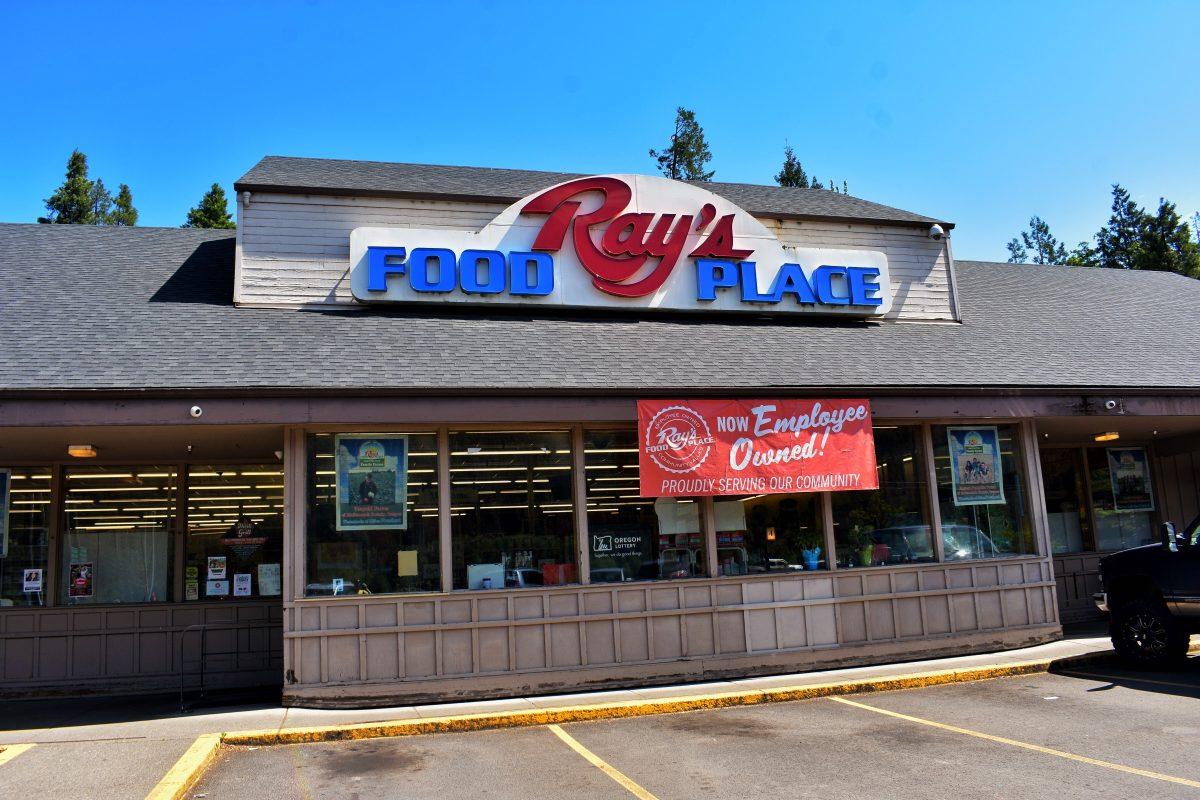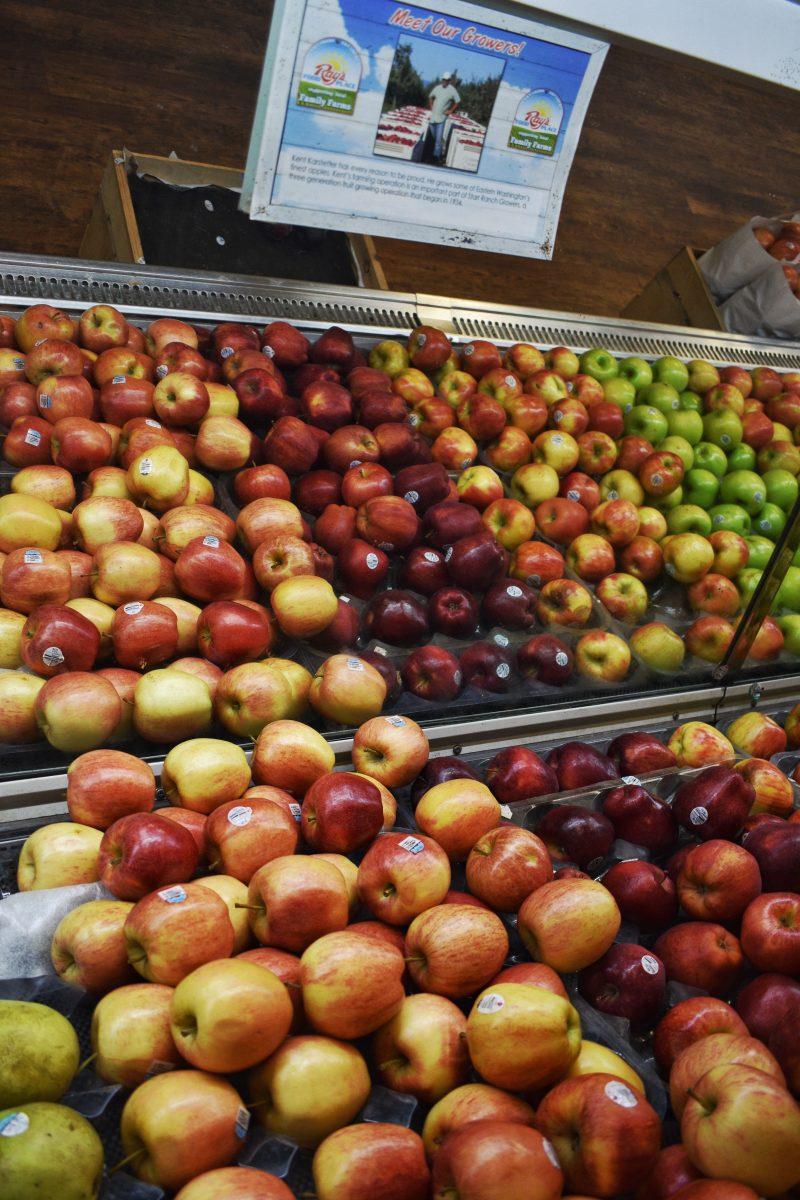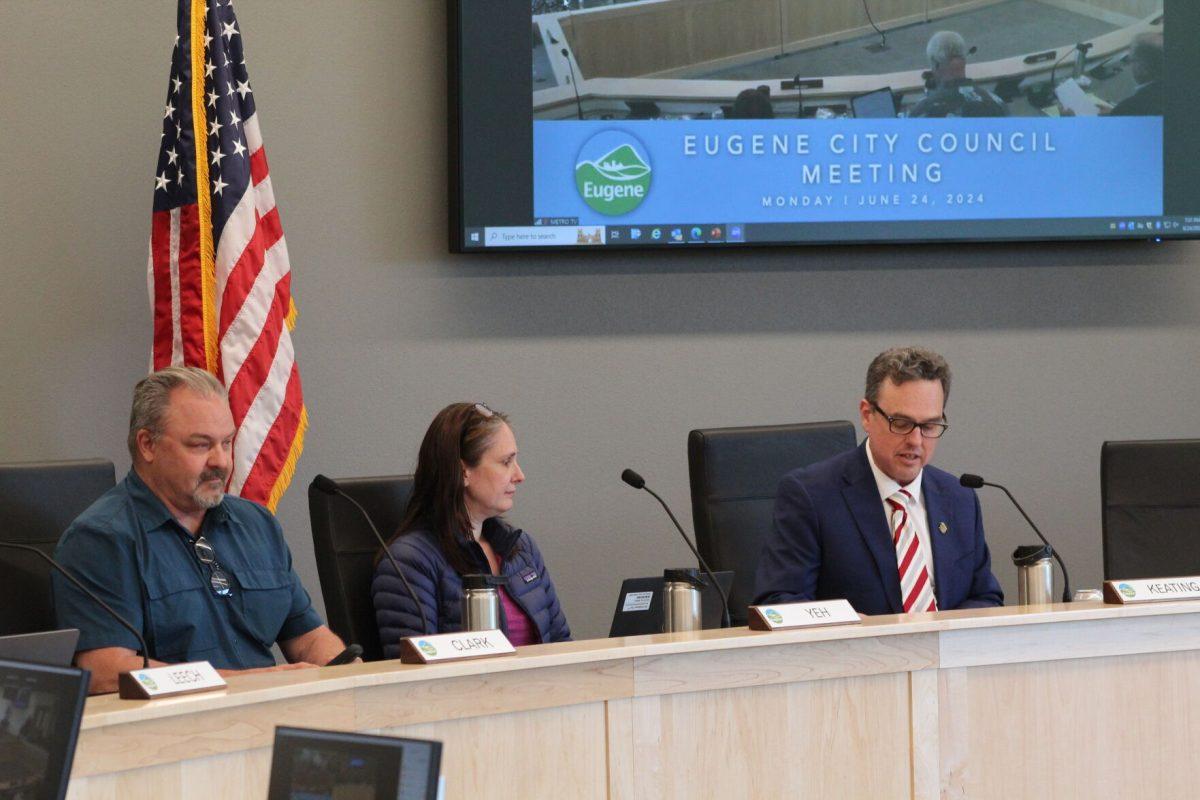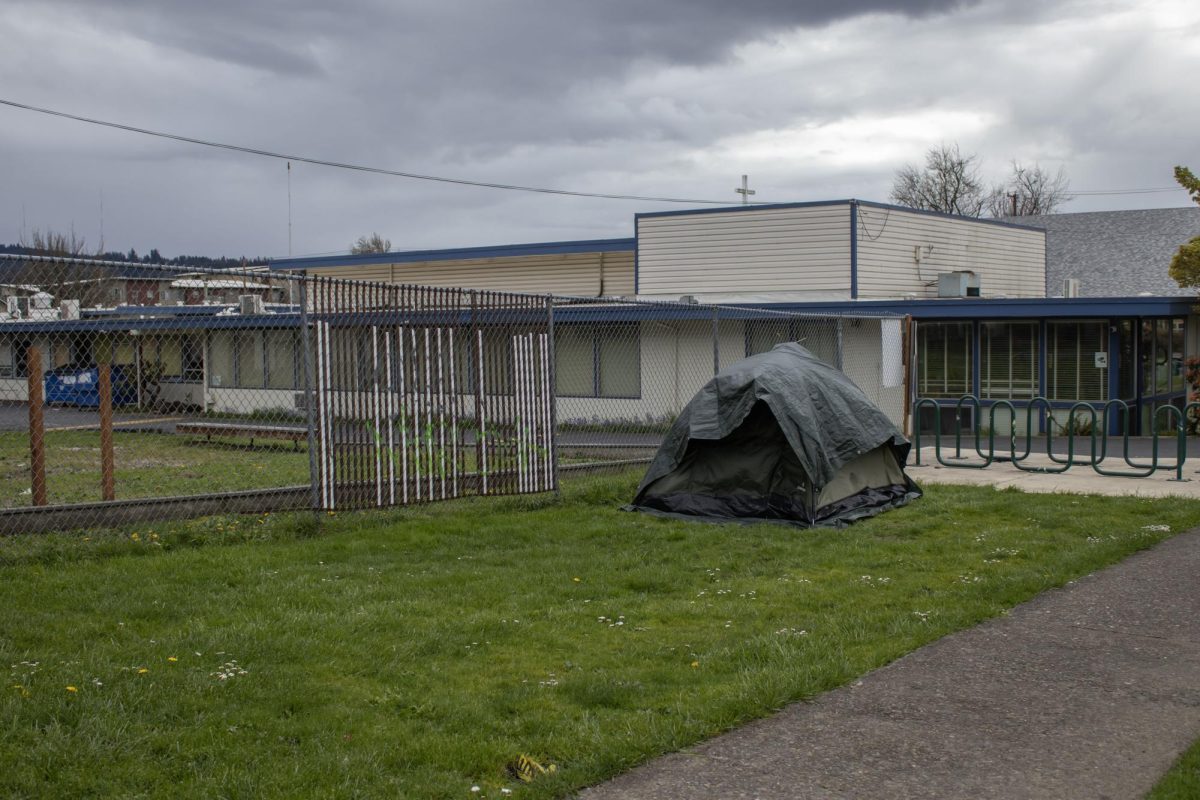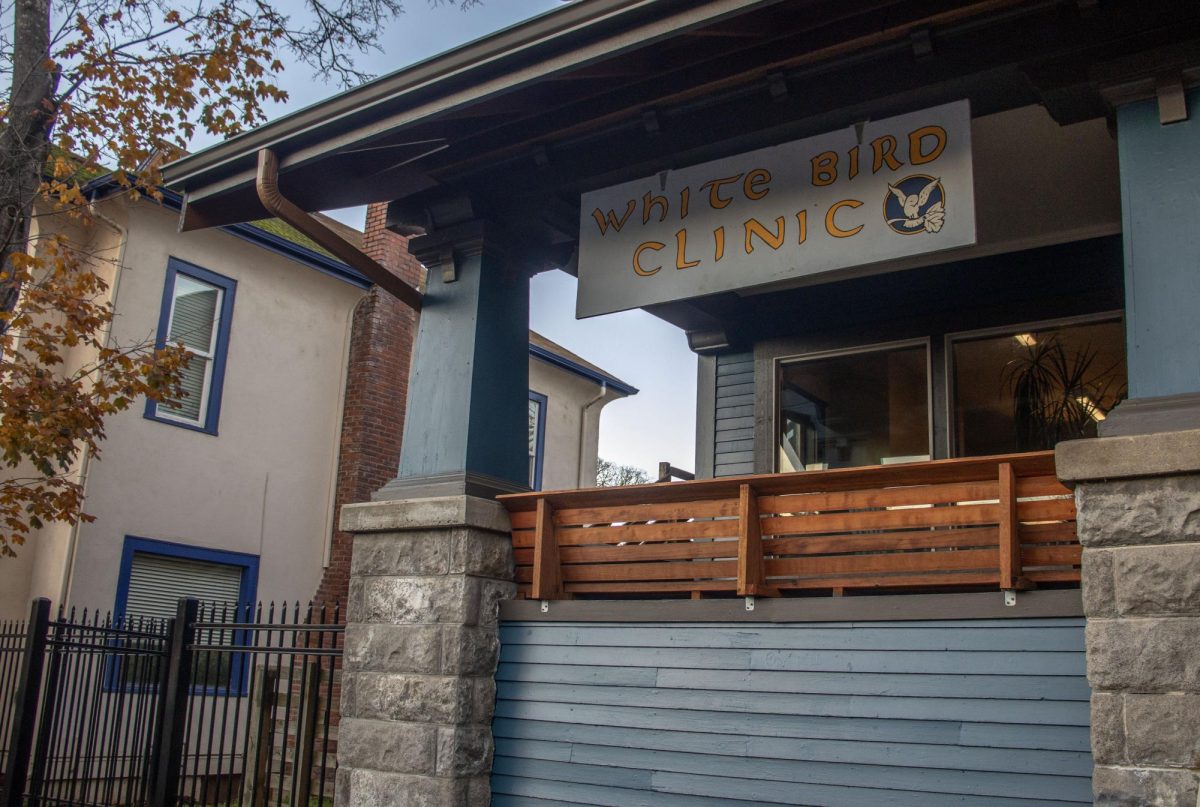The drive to Oakridge from Eugene, while peaceful with countryside landscapes, is long. Many Oakridge residents, who commute regularly to Eugene or Springfield for work, know this. The nearly one-hour drive is absent of urban buildings synonymous with bigger towns such as Eugene, but rather is full of green pastures and country homes associated with rural towns, like Oakridge.
Oakridge has one convenience store, a Dollar General, and one grocery store to serve its 3,240 citizens. It’s a town that lives in both poverty and a food desert — a likely combination for most of small-town America.
About 12% of Oregon residents live in poverty, with the median household income being $70,084, according to the U.S. Census Bureau. But in Oakridge, 30% of residents live in poverty — more than doubling the state average — and the average household income is $33,088.
Residents “rely almost exclusively on the food bank for nutrition,” with the next closest grocery store being 35 miles, roughly an hour’s drive, away from Oakridge, Rick Zylstra, a volunteer at Oakridge Food Pantry said.
In 2021 and 2022, the Oakridge Food Pantry distributed roughly 180,000 pounds of dry goods and bakery items from Food for Lane County to residents, Bev McCulley, board chairwoman for Upper Willamette Community Development Corporation, a non-profit food distribution center, said.
McCulley noted an increase in demand within the past three months for the food pantry due to Supplemental Nutrition Assistance Programbenefits being reduced for those who rely on the program to pay for groceries. According to SNAP’s website, Oregon families who depend on SNAP saw a 40 percent decrease in benefits in March, even with the increasing prices of food and housing.
“Earlier in the year, we would serve 60 families per week. Now, it’s increased to 80 families per week,” she said.
Due to the high number of customers who rely on the Oakridge Food Pantry, families are limited to shopping two times a month at the pantry. After their second visit, McCulley said, families must look to other organizations, food drives or grocery stores for food.
“It’s supposed to be supplemental food. We have to limit families so we can serve everyone, and really try to help everyone,” McCulley said. “We don’t want to see people go hungry.”
The only convenience store in Oakridge’s Center Market serves primarily “7/11- type of stuff,” James Cleavenger, Oakridge’s City Administrator, said. “They have an extensive hot bar. Anything you want — onion rings, jalapeno poppers, three different kinds of corn dogs.”
Oakridge previously had two convenience stores, the other being Rascal’s Market, but the store closed recently after reopening in 2022.
Oakridge would be considered a food desert according to a United State Department of Agriculture report, which lists common characteristics of food deserts as having a poverty rate exceeding 20%, and at least 500 citizens being located 10 miles away from the next grocery store. Oakridge’s poverty rate more than doubles USDA’s given number, and citizens are three times as far away from the next grocery store.
Ray’s Food Place is the sole grocery store for the town. A popular chain across Oregon, Ray’s offers the usual grocery store food: fruits, vegetables, meat, dairy and other products. At checkout, a customer and cashier chat about bears getting into their homes’ trash bins overnight.
Though a traditional grocery store in the sense of atmosphere, the catch at Ray’s boils down to some higher prices to pay once at checkout. Prices of products are sometimes inflated compared to grocery store prices in Eugene or Springfield, Zylstra said.
Cleavenger said the inflation of prices at Ray’s has to do with “trucking [food] out to the middle of nowhere.”
With the high cost that comes from shopping at Ray’s, some Oakridge residents prefer to shop elsewhere, like Eugene, which has almost 60 grocery stores for shoppers to choose from.
“For those already working in the Eugene/Springfield area, going shopping after work is a much more positive way of buying food rather than going back to Oakridge and spending more on groceries,” Zylstra said.
Even though grocery prices may be cheaper farther from town, the amount of time Oakridge residents must spend on grocery shopping adds up. Oakridge residents who don’t have their own transportation and must rely on public transportation suffer the most consequences.
Public transportation services are limited to two buses that leave Oakridge to Eugene and Springfield in the morning, with one bus that arrives back in the evening. On weekends, when those without transportation might have more time to shop for groceries, services are reduced even more.
“If you were employed in Eugene, Springfield or Oakridge, and you didn’t meet those bus hours, you would be hard-pressed to do shopping via public transit,” Zylstra said.
McCulley said that rural communities much like Oakridge often are left out of the picture by those in metropolitan areas and face issues consequently. She noted a general sense of haves and have-nots within this realm.
Though financial troubles and lack of food options are persistent across town, the citizens of Oakridge continue to celebrate community. Annually, Oakridge celebrates a tree-planting festival each spring, which has the opportunity to “bring people together in positive and joyful ways,” cited from the festival’s website. Each fall, Oakridge celebrates its Keg & Cask Festival, where proceeds are given to the Upper Willamette Community Development Corporation Oakridge Food Box.
“People watch out for their neighbors, and take care of each other,” McCulley said. “Having a stronger economic base would be helpful, but everyone is working on making Oakridge better.”
Ray’s Food Place is the sole grocery store in the town of Oakridge.

